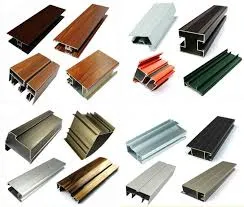Techniques and Innovations in Gate Welding for Enhanced Durability and Aesthetic Appeal
Understanding Gate Welding Techniques and Best Practices
Gate welding is a specialized technique commonly used in the fabrication and repair of metal gates, fences, and enclosures. It encompasses the process of joining metal components through the application of heat and pressure, creating a strong and durable bond. This article aims to explore the different aspects of gate welding, including its methods, materials, safety considerations, and some best practices to ensure quality results.
The Importance of Gate Welding
The primary purpose of gate welding is to assure the structural integrity of gates and fences. A well-welded gate not only provides security for properties but also enhances aesthetic appeal. Gates can be made from various materials, including steel, aluminum, and wrought iron, making welding an essential process in their manufacturing and maintenance.
Welding Techniques
Various welding techniques can be employed depending on the materials used and the desired outcome. Here are some of the most popular methods
1. MIG Welding (Metal Inert Gas Welding) MIG welding is widely used in gate welding due to its speed and versatility. It involves feeding a continuous wire electrode through a welding gun, which melts the wire and joins the base metals. This method is suitable for both thin and thick materials and can be employed for aluminum and steel gates.
2. TIG Welding (Tungsten Inert Gas Welding) Known for its precision, TIG welding is ideal for projects requiring clean and aesthetic welds. An inert gas protects the weld area from contamination, making it a good choice for stainless steel and aluminum gates. However, it is a slower process compared to MIG welding and requires a higher skill level.
3. Stick Welding (Shielded Metal Arc Welding) Stick welding uses a consumable electrode coated in flux to create a weld. While it’s less common for gate fabrication, it can be useful for outdoor repairs or in situations where portability and equipment simplicity are valued.
4. Spot Welding This method is typically used for joining overlapping pieces of metal at specific points. It is often employed in the manufacturing of metal gates and fence panels, particularly when working with thinner materials.
Materials Used
The choice of material significantly impacts the welding process and the overall durability of the gate. Common materials include
- Mild Steel Known for its strength and ease of welding, mild steel is a popular choice for constructing gates. It can be coated with paint or a protective layer to prevent rust and corrosion.
- Aluminum Lightweight and resistant to corrosion, aluminum gates are preferred in environments where rust is a concern. Welding aluminum requires specific techniques, as it has a lower melting point than steel.
gate welding

- Stainless Steel Known for its aesthetic appeal and corrosion resistance, stainless steel is a premium choice for gates. TIG welding is commonly used with stainless steel due to the need for clean and precise welds.
Safety Considerations
Welding can pose various hazards, so it’s crucial to follow safety protocols to protect yourself and others. Here are a few key safety measures
- Protective Gear Always wear appropriate personal protective equipment (PPE), including a welding helmet, gloves, and flame-resistant clothing.
- Ventilation Ensure that the welding area is well-ventilated to prevent the buildup of hazardous fumes and gases.
- Fire Safety Keep a fire extinguisher nearby and remove flammable materials from the welding area to reduce the risk of fire hazards.
Best Practices for Quality Welding
To achieve a strong and aesthetically pleasing weld, consider the following best practices
- Preparation Clean the metals to be welded to remove any contaminants, such as rust, paint, or grease. Proper fit-up is essential for an effective weld.
- Technique Use the appropriate welding technique and settings based on the materials being welded. Practice on scrap material if you are unfamiliar with a specific method.
- Inspection After welding, inspect the joints for any signs of defects, such as cracks or incomplete fusion. Regularly checking your work can prevent larger issues down the line.
Conclusion
Gate welding is a crucial skill in metal fabrication and repair, ensuring the durability and aesthetic quality of gates and fences. By understanding the techniques, materials, safety considerations, and best practices involved, welders can enhance their skills and produce high-quality results. With proper training and attention to detail, gate welding can be both an art and a science, providing lasting security and beauty to properties.
-
Wrought Iron Components: Timeless Elegance and Structural StrengthNewsJul.28,2025
-
Window Hardware Essentials: Rollers, Handles, and Locking SolutionsNewsJul.28,2025
-
Small Agricultural Processing Machines: Corn Threshers, Cassava Chippers, Grain Peelers & Chaff CuttersNewsJul.28,2025
-
Sliding Rollers: Smooth, Silent, and Built to LastNewsJul.28,2025
-
Cast Iron Stoves: Timeless Heating with Modern EfficiencyNewsJul.28,2025
-
Cast Iron Pipe and Fitting: Durable, Fire-Resistant Solutions for Plumbing and DrainageNewsJul.28,2025
-
 Wrought Iron Components: Timeless Elegance and Structural StrengthJul-28-2025Wrought Iron Components: Timeless Elegance and Structural Strength
Wrought Iron Components: Timeless Elegance and Structural StrengthJul-28-2025Wrought Iron Components: Timeless Elegance and Structural Strength -
 Window Hardware Essentials: Rollers, Handles, and Locking SolutionsJul-28-2025Window Hardware Essentials: Rollers, Handles, and Locking Solutions
Window Hardware Essentials: Rollers, Handles, and Locking SolutionsJul-28-2025Window Hardware Essentials: Rollers, Handles, and Locking Solutions -
 Small Agricultural Processing Machines: Corn Threshers, Cassava Chippers, Grain Peelers & Chaff CuttersJul-28-2025Small Agricultural Processing Machines: Corn Threshers, Cassava Chippers, Grain Peelers & Chaff Cutters
Small Agricultural Processing Machines: Corn Threshers, Cassava Chippers, Grain Peelers & Chaff CuttersJul-28-2025Small Agricultural Processing Machines: Corn Threshers, Cassava Chippers, Grain Peelers & Chaff Cutters












